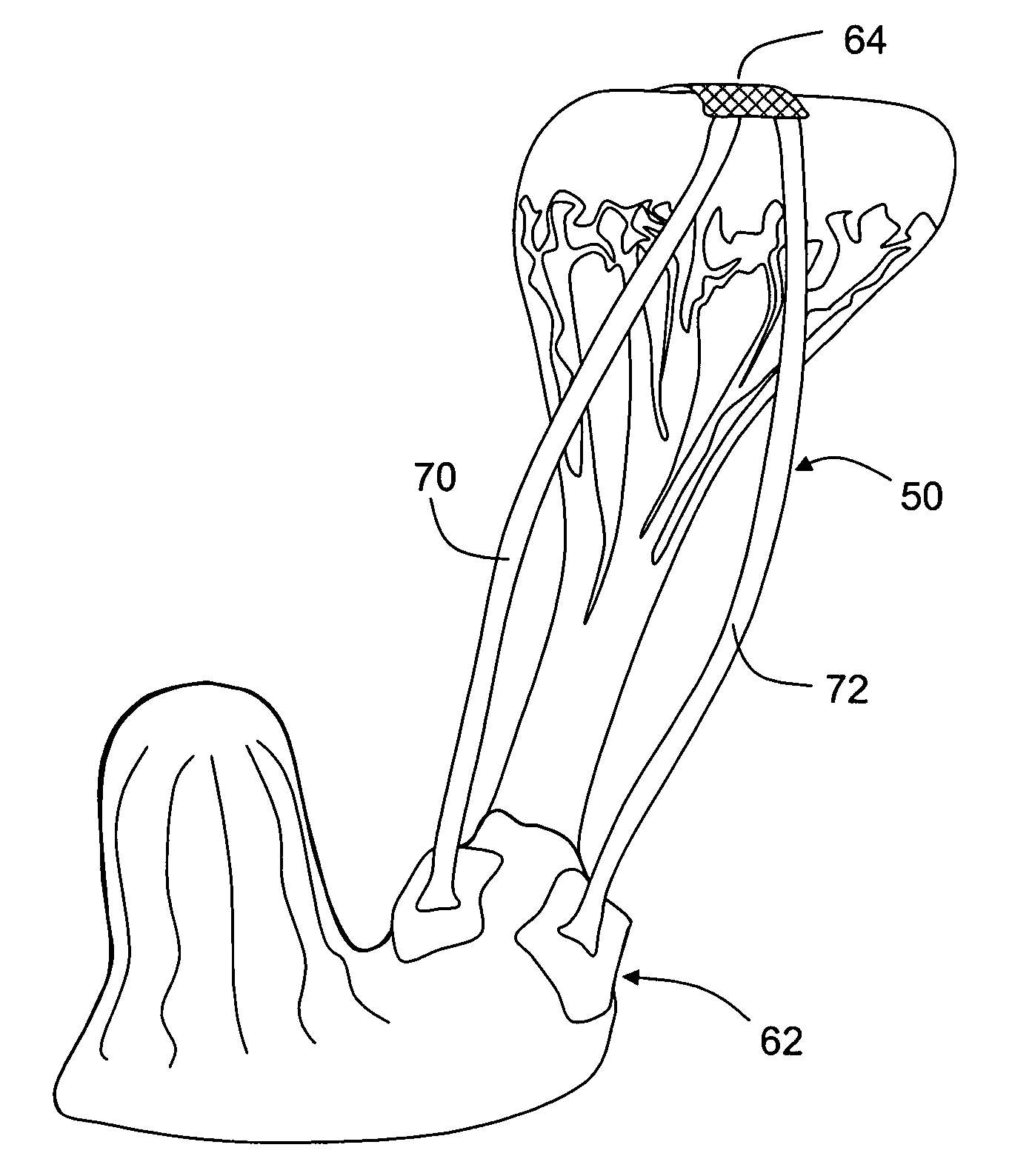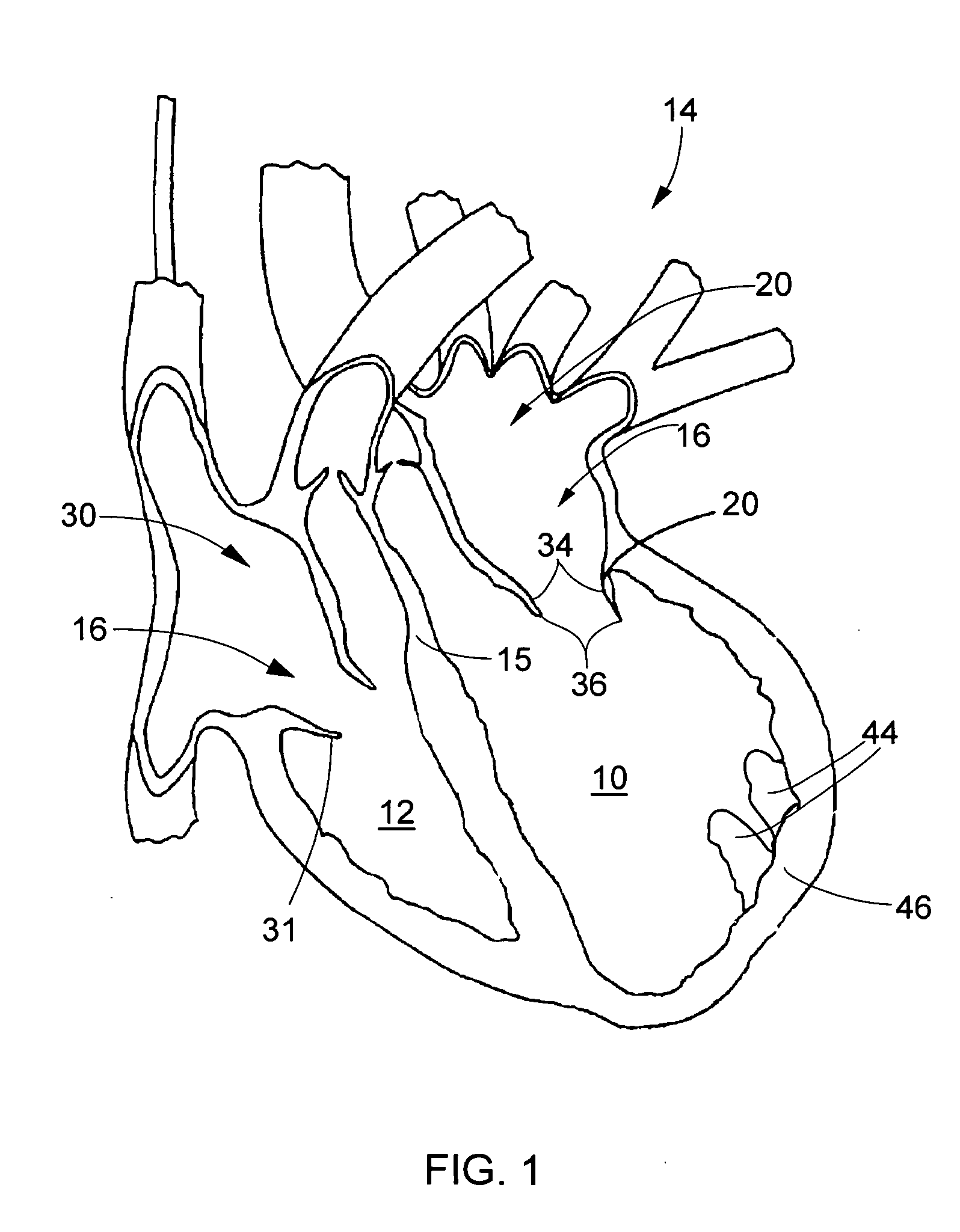Methods and apparatus for atrioventricular valve repair
a technology for atrioventricular valves and surgical repair, applied in the field of medical methods and equipment, can solve the problems of affecting cardiac function, enabling leakage through, and deteriorating the function of the mitral valve, so as to facilitate the reduction of leakage, facilitate the operation of the heart valve, and facilitate the effect of reducing leakag
- Summary
- Abstract
- Description
- Claims
- Application Information
AI Technical Summary
Benefits of technology
Problems solved by technology
Method used
Image
Examples
Embodiment Construction
[0019]FIG. 1 is a cross-sectional view of the left and right ventricles 10 and 12, respectively, of a human heart 14 during diastole. Ventricles 10 and 12 are separated by an interatrial septum 15. FIG. 2 is a cross-sectional view of heart 14 during systole. The present invention provides methods and apparatus for the endovascular repair of cardiac valves, particularly atrioventricular valves 16, which inhibit back-flow of blood from a heart ventricle during contraction (systole). In particular, the present invention may be used in repairing, but is not limited to repairing, mitral valves 20.
[0020] As used herein, the term “endovascular,” refers to procedure(s) of the present invention that are performed with interventional tools and supporting catheters and other equipment introduced to the heart chambers from the patient's arterial or venous vasculature remote from the heart. The interventional tools and other equipment may be introduced percutaneously, i.e., through an access sh...
PUM
 Login to View More
Login to View More Abstract
Description
Claims
Application Information
 Login to View More
Login to View More - R&D
- Intellectual Property
- Life Sciences
- Materials
- Tech Scout
- Unparalleled Data Quality
- Higher Quality Content
- 60% Fewer Hallucinations
Browse by: Latest US Patents, China's latest patents, Technical Efficacy Thesaurus, Application Domain, Technology Topic, Popular Technical Reports.
© 2025 PatSnap. All rights reserved.Legal|Privacy policy|Modern Slavery Act Transparency Statement|Sitemap|About US| Contact US: help@patsnap.com



